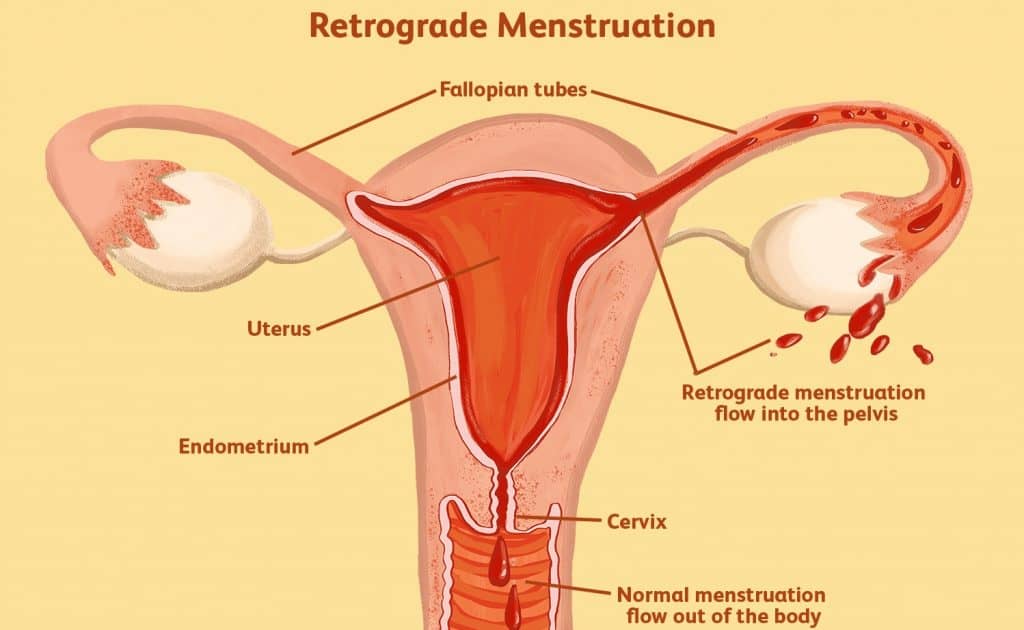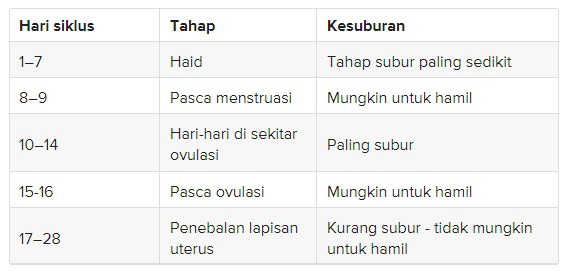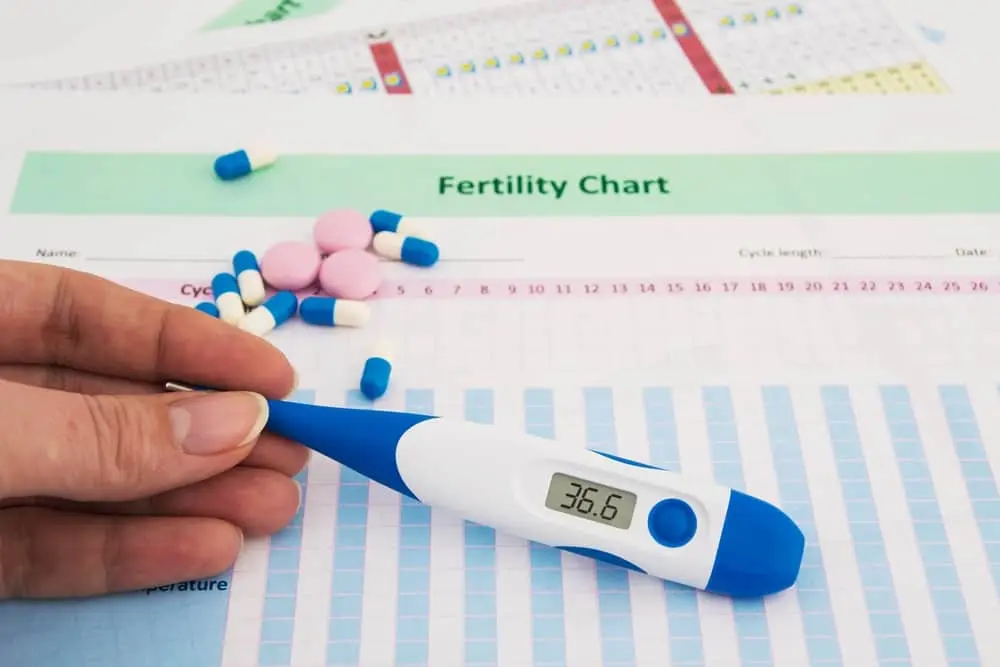Share This Article
For Moms who are planning a pregnancy, it’s a good idea to understand a woman’s fertile period and also the various things that accompany it.

Such as the menstrual cycle , when a woman is most fertile, factors supporting a woman’s fertile period, and so on.
For this reason, let’s follow the following review regarding the ins and outs of a woman’s fertile period.
Take care of your and your family’s health with regular consultations with our doctor partners. Download the Good Doctor application now, click this link , OK!
Also read: Frequently itchy genitals could be a sign of vaginal discharge, let’s find out the cause
Understanding the menstrual cycle
The menstrual cycle is the period that occurs from the first day a woman menstruates, until she enters her menstrual period in the following month.
The duration or length of the menstrual cycle can be different for each individual. The average normal woman has a menstrual cycle of 28 days. However, if someone experiences a cycle of 21 to 40 days, it is still considered normal.
Menstruation can start to occur when women reach the age of 10 years and over. However, the average menstruation in girls occurs at around 12 years of age, according to Toni Belfield, a sexual health specialist as reported by the NHS.
Meanwhile, women will also start experiencing menopause when they reach their 50s. Between the ages of 12 and 52 years a woman will experience around 480 menstrual cycles.
What happens during the menstrual cycle

Before understanding the menstrual cycle, we also need to know what the reproductive organs are in a woman’s body.
The following are the female reproductive organs that play a role in a person’s pregnancy:
- The ovaries are the place where eggs are stored, developed and released. Every woman is born with 2 ovaries, on the left and right.
- The uterus is the place where the fertilized egg is located and will develop into a baby.
- The fallopian tubes are two thin tubes that connect the ovaries to the uterus. It is through this channel that the egg cell will move.
- The cervix is the entrance to the uterus from the vagina.
- Vagina .
Stages of the menstrual cycle
After understanding what organs are involved, let’s understand the several stages that occur in the menstrual cycle.
- First, we need to know that the menstrual cycle is controlled by hormones in the body. When the hormone estrogen increases, the ovaries will develop and release eggs. This process of releasing an egg is called the ovulation process. At this stage, the lining of the uterus will begin to thicken.
- In the second half of the menstrual cycle, the hormone progesterone helps the uterus to prepare for implantation of the developing embryo.
- After ovulation, the egg will move from the ovary to the fallopian tube. Then it lasts up to 24 hours waiting for sperm cells to come and fertilize it.
- If the egg is successfully fertilized, the egg will move to the uterus and develop into an embryo and this means you are pregnant.
- If fertilization does not occur, the egg will move to the uterus, become damaged, and be ready to be expelled from the body. At this stage, the levels of the hormones estrogen and progesterone decrease, the uterine wall sheds, and causes menstruation.
- The time required from the release of an egg to menstruation usually occurs between 10 and 16 days.
The first day of menstruation is the first day of the menstrual cycle. Menstruation generally lasts between 2 and 7 days.
In this period, a woman can lose 3 to 5 tablespoons of blood. Some can even do more.
What happens during the ovulation process?
As mentioned in the initial discussion, ovulation is the process of releasing eggs in the ovaries. Well, every woman is born with the ability to produce egg cells.
When a person starts menstruating, their body will start producing 1 egg cell and releasing it during the menstrual cycle. After the ovulation process, the egg can live for up to 24 hours.
Pregnancy can occur if the egg is successfully fertilized by sperm. Because sperm can survive up to 7 days in the fallopian tubes.
Sometimes more than 1 egg is released during the ovulation process. If more than 1 egg is successfully fertilized, a multiple pregnancy such as twins will occur.
A woman cannot get pregnant if the ovulation process does not occur. Some hormonal contraceptive methods such as taking pills can stop the ovulation process.
When is the peak fertile period for women?
The peak of a woman’s fertile period occurs between the first and second days when eggs begin to be released from the ovaries, aka ovulation. However, it is rather difficult to determine exactly when ovulation occurs in women.
In some women, ovulation occurs on days 10 to 16 before entering the next menstrual cycle. However, this is more applicable to women who have normal menstrual cycles.
It’s different for a woman whose cycle is shorter or longer. Moms can get pregnant if they have sex within 1 week before ovulation. Because sperm can survive in a woman’s body for up to 7 days.
Calculating a woman’s fertile period

Reporting from Medical News Today , the American College of Obstetricians and Gynecologists states that the ovulation process occurs around 14 days before a woman enters the next menstrual cycle.
Most women ovulate between days 11 to 21 of their menstrual cycle. However, the ovulation process does not always occur on the same day every month.
At this time, the chances of Moms getting pregnant are very high. Based on a study from the journal Human Reproduction which looked at data from 5,830 pregnant women, the possibility of someone getting pregnant is very high during the 7 days after the previous month’s menstrual cycle (LMP).
In this study, the following data on women’s fertile periods were observed:
- 2 percent on day 4 of their cycle
- 58 percent on day 12 of their cycle
- 5 percent on day 21 of their cycle
To help Moms in knowing a woman’s fertile period, here are some pointers in the following table that might be helpful:

Fertility calendar
Before using the calendar method to calculate the fertile period. You need to record the length of your menstrual cycle for at least 6 periods.
Apart from using a physical calendar, you can also do this with fertility tracking applications which are widely available on the smartphone market. The way to calculate it is more or less like this:
- The length of the menstrual cycle is the number of days between the first day of menstruation in one period, and the first day of the next menstruation. It can vary from 23 to 35 days, and the average is 28 days.
- If you have an irregular menstrual cycle, calculating your ovulation date can be more difficult, but experts recommend looking at the shortest menstrual date to make sure you don’t miss your ovulation date.
Women’s fertile period and age
A woman’s ovulation and fertile period can change from one cycle to the next, you know. Apart from that, fertility levels can also change as a person ages.
The decline in women’s fertility levels generally begins to occur at the age of 35 years. The production and quality of egg cells will decrease and ovulation will also become more irregular.
Apart from age, medical conditions such as endometriosis or polycystic ovary syndrome can also be a factor in making it more difficult to fertilize an egg.
Signs of ovulation during a woman’s fertile period
So, so far we know that the peak fertile period for women is during the ovulation process. Namely when the ovaries start producing and releasing eggs.
By knowing the signs of ovulation, this can help Moms and partners in planning a pregnancy. Here are some signs of the start of ovulation:
- Mild cramping in the lower abdomen
- Wetter , clearer, and smoother vaginal discharge similar to egg white
- There is an increase in basal body temperature
- There is a higher sex drive.
To help Moms recognize the fertile period, you can also help with the following tips:
1. Basal Body Temperature (BBT) Monitoring
Changes in basal body temperature are a sign that the body is starting to ovulate. Basal body temperature is your body temperature in the morning.
When the ovulation cycle begins, the BBT will usually rise slightly and will remain elevated throughout ovulation. Record BBT regularly every morning.
However, to get accurate results, Moms can do the following tips:
- Use a special thermometer . Ordinary thermometers are sometimes less accurate in monitoring BBT, so consider purchasing a special thermometer to monitor basal body temperature.
- Check regularly . Check your basal body temperature every morning at the same time. Don’t forget to do it before Moms gets out of bed. Because going to the toilet or kitchen can change your basal body temperature.
2. Pay attention to signs of vaginal discharge
Apart from BBT, cervical mucus or whitish mucus in the cervix can also be a sign of ovulation. Vaginal discharge and menstruation are controlled by the same hormones.
In the period before and during the ovulation process, Moms will experience changes in vaginal discharge. When the ovaries prepare to release an egg, vaginal discharge will increase.
Before the ovulation period, the vaginal discharge will feel sticky and be cloudy or whitish in color. Well, right before ovulation occurs, the vaginal discharge will feel smoother and look like egg white. This stage can last 3 to 4 days.
If you have difficulty monitoring BBT and vaginal discharge, Moms can also use a special tool that can monitor fertility. This device measures specific hormone levels in urine to identify peak fertility.
Maximizing women’s fertile period
After knowing when a woman’s peak fertile period is, there are several things you can do to increase your chances of pregnancy.
Such as having sexual intercourse 2 to 3 days before and during the ovulation process. Because during this period the chance of pregnancy increases by between 20-30 percent.
Here are some things that can increase the chances of conception and pregnancy:
- Regular sexual intercourse . Having sexual intercourse every 2 or 3 days during your menstrual cycle can increase your chances of getting pregnant.
- Avoid smoking . Did you know that the use of tobacco products can reduce fertility and can have an impact on the health and development of the fetus, you know. So always avoid smoking.
- Limit alcohol intake . Apart from cigarettes, both Moms and husbands are also advised to limit alcohol consumption. Because alcohol can reduce the fertility of both men and women. Apart from that, alcohol can also harm the fetus.
- Maintain normal weight . People who are overweight or underweight tend to experience irregular ovulation cycles.
Also read: Unbearable headaches, here are 10 ways to relieve them
When to go to the doctor?
People who monitor a woman’s fertile period usually have the goal of getting pregnant. So, during this pregnancy program, it’s a good idea to consult with a midwife or obstetrician.
By consulting a doctor, Moms and their partners can find out what obstacles they are facing, and provide the best advice to increase their chances of a healthy pregnancy. Such as using folic acid and also consuming other supplements.
Who should visit a doctor?
- Most couples who frequently have unprotected sexual intercourse will become pregnant within 12 months. However, if you are under 35 years old and have not gotten pregnant after 1 year of trying, you should immediately visit a doctor.
- Apart from that, if you have an irregular menstrual cycle, you should also consult a doctor early. This is done to find out medical conditions that can hinder the ovulation process and also pregnancy.
Take care of your and your family’s health with regular consultations with our doctor partners. Download the Good Doctor application now, click this link , OK!


